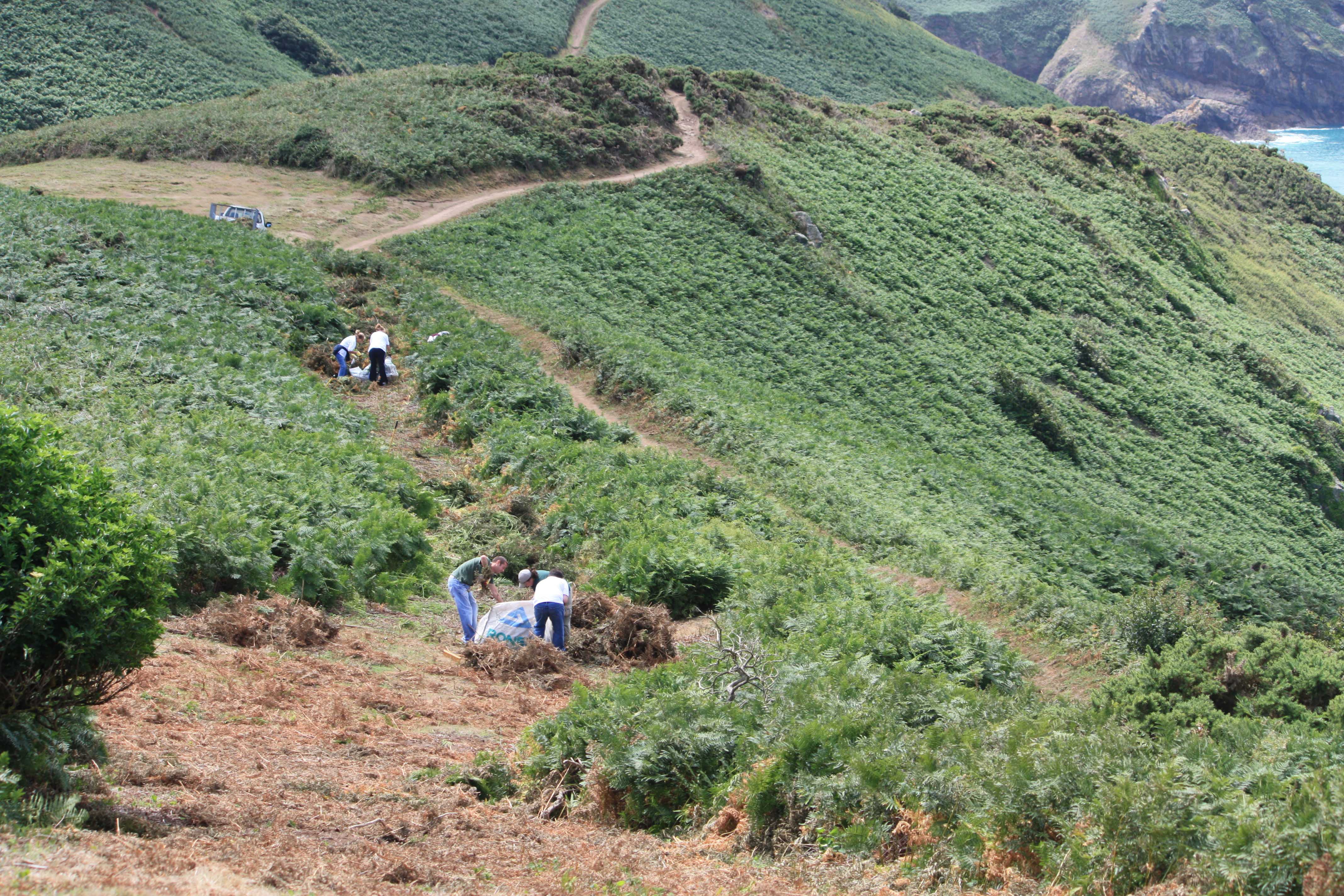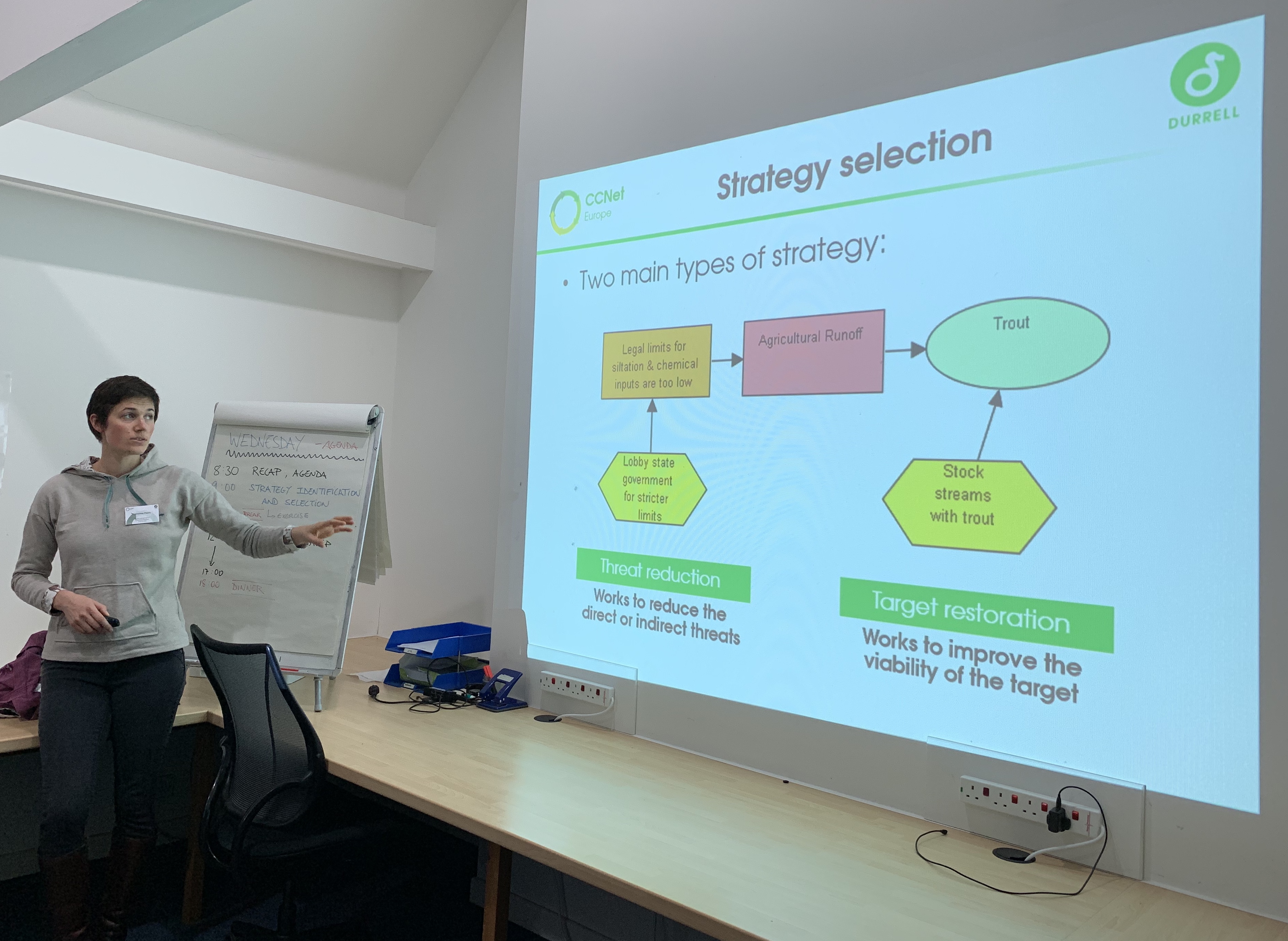


Jersey farmland bird transects have been conducted by Durrell staff, partners and volunteers since 2005. This data combined with other datasets highlighted declining population trends leading to the publication of The Conservation Status of Jersey’s Birds.
In 2010, a partnership between Durrell, the National Trust for Jersey, and the Government of Jersey established Birds On The Edge, a conservation initiative to restore depleted coastal farmland bird populations. The reintroduction of chough acting as a driving force to implement change.
Feasibility studies supported the need to reintroduce chough; natural colonization was not a feasible option. They also identified a release site at Le Don Paton on the north coast. The National Trust for Jersey introduced a free-ranging flock of Manx loaghtan sheep to graze the site ensuring the birds had natural foraging habitat once released. The National Trust also purchased adjacent agricultural fields to avoid any land management conflicts and to sow conservation crops (another component of the initiative).
A reintroduction plan was created following IUCN Guidelines for reintroductions and other conservation translocations. This document assisted in securing licensing for the release, initial funding, and provided a way of clearly communicating intentions to stakeholders.
- Accessible baseline data to make informed decisions.
- Visionary and experienced project leaders.
- Existing guidelines for a reintroduction.
- Land ownership by a project partner makes it easier to determine and carry out management decisions.
- Jersey is a small island with relatively less bureaucracy than other countries and a smaller network of players.
There is a lack of baseline data for habitat quality pre-grazing and pre-reintroduction particularly habitat mapping and invertebrate biodiversity. This is evident when evaluating the success of Birds On The Edge and assessing the long-term needs of the reintroduced chough population. With hindsight, more could have been done.
More formality between the Birds On The Edge partnerships would help with strategic planning, clarity for donors, and improve communication and outreach. There is no contracted position to oversee the management of Birds On The Edge. There is no team specifically dealing with marketing and education which has limited the effectiveness of our outreach, especially with social media an increasingly important tool for engagement and funding resources.